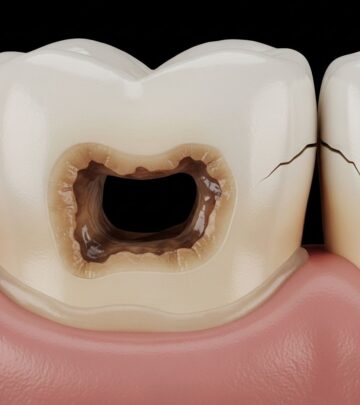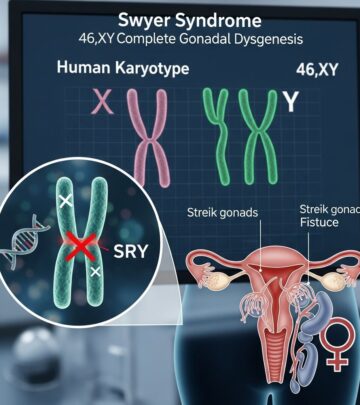Rheumatoid Arthritis: Understanding Its Symptoms and Warning Signs
Explore the full spectrum of rheumatoid arthritis symptoms, from early joint pain to systemic complications and advice on when to seek medical help.

Rheumatoid arthritis (RA) is a chronic autoimmune disorder marked by inflammation of the joints and, in some cases, other tissues and organs throughout the body. The onset and severity of RA symptoms can vary widely among individuals, evolving steadily or appearing quickly within days. This article explores the full range of symptoms and warning signs associated with rheumatoid arthritis, both in the joints and elsewhere, as well as advice on when to seek professional medical attention.
Main Symptoms of Rheumatoid Arthritis
The hallmark symptoms of rheumatoid arthritis primarily affect the joints, although the disease can also cause general systemic symptoms and inflammation in other areas of the body. The main joint symptoms are typically:
- Pain
- Stiffness
- Swelling
These symptoms commonly develop gradually but may appear suddenly in more acute cases. Many people experience periods of symptom intensification—known as flares—followed by intervals of relative calm.
Symptoms Affecting the Joints
Rheumatoid arthritis mainly targets the joints, with the following detailed features:
Pain
The pain associated with RA often feels throbbing or aching. It tends to be worse in the morning or after long periods of rest and inactivity. This discomfort can go beyond the sensation of normal wear and tear, frequently becoming chronic over time.
Stiffness
Joint stiffness is another common feature. Those affected might struggle to fully bend fingers, clench a fist, or move the affected joints freely. Stiffness is usually most pronounced in the morning or after resting. For many, this morning stiffness lasts longer than 30 minutes—much longer than the brief stiffness seen with osteoarthritis.
Swelling, Warmth and Redness
RA causes inflammation of the lining of affected joints, resulting in swelling that makes joints appear puffier, feel hot, and sometimes look red. The swelling may lead to tenderness and sensitivity to pressure or touch.
Symmetry of Symptoms
A typical but not universal characteristic of RA is symmetrical joint involvement—meaning similar joints on both sides of the body are affected at the same time and to a similar extent.
Joints Commonly Affected
- Small joints in the hands and feet
- Wrists, elbows and ankles
- Knees (frequent in moderate to advanced disease)
- Less commonly: shoulders, hips, neck
More General Symptoms
In addition to joint-specific symptoms, people with rheumatoid arthritis may experience a host of general (systemic) effects. These include:
- Fatigue: Persistent tiredness, sometimes severe, often unrelated to activity or rest
- A general feeling of being unwell (malaise)
- Fever: Mild increases in temperature may occur
- Appetite loss: Reduced desire to eat, which can lead to unintentional weight loss
- Muscle aches: Generalized muscle soreness is common, contributing to weakness
- Anemia: A lack of healthy red blood cells, exacerbating fatigue and weakness
- Depression: Living with chronic pain and fatigue can contribute to feeling down, anxious, or depressed
Symptoms and Inflammation Outside the Joints (Extra-Articular Symptoms)
RA’s effects are not always confined to the joints. Inflammation can extend to other organs and tissues, producing additional symptoms. Significant extra-articular features include:
Rheumatoid Nodules
Up to one in four people with RA develop firm lumps known as rheumatoid nodules under the skin around affected joints. These nodules are typically painless and movable, most often occurring:
- On the elbows
- On the underside of the forearm
- Around the Achilles tendon
- On the back of the head
- At the base of the spine or over finger tendons
While usually harmless, they can sometimes cause complications if they press on nerves or become ulcerated.
Other Tissue and Organ Involvement
- Tendons: Inflammation around tendons (tenosynovitis), making movement painful.
- Lungs: In rare cases, inflammation can affect lung tissue and the lining around the lungs, leading to chest pain, shortness of breath, or persistent cough. Severe inflammation can result in pulmonary fibrosis, a scarring and stiffening of lung tissue.
- Heart: Rare involvement may include inflammation of the heart lining (pericarditis) or even the cardiac muscle itself.
- Blood vessels: Vasculitis, or inflammation of blood vessels, is uncommon but can affect circulation and increase risk for other complications.
- Eyes: Mild irritation to more serious inflammation (such as scleritis) may occur, sometimes threatening vision if left untreated.
How Do Symptoms Develop?
The onset and progression of rheumatoid arthritis symptoms can be unpredictable. In most cases:
- Symptoms develop gradually over weeks
- Some cases progress quickly over days
- Symptoms vary significantly between individuals
- Periods of increased severity—flares—can alternate with intervals of milder symptoms or remission
The pattern and severity of joint involvement and extra-articular symptoms can change over time, even within the same person.
Comparing Rheumatoid Arthritis and Osteoarthritis Symptoms
| Feature | Rheumatoid Arthritis | Osteoarthritis |
|---|---|---|
| Onset | Gradual over weeks or sudden | Very gradual, takes years |
| Pattern | Usually symmetrical | Often asymmetrical |
| Morning stiffness | Longer than 30 minutes | Usually less than 30 minutes |
| Swelling | Common and prominent | May be mild |
| Other symptoms | Systemic: fatigue, fever, weight loss | Usually absent |
Symptoms in Children: Juvenile Idiopathic Arthritis
While this article focuses on adults, it’s important to note that children can develop a disease similar to RA, known as juvenile idiopathic arthritis. Symptoms often mimic those found in adults:
- Joint pain and swelling
- Stiffness, especially in the morning
- General symptoms such as tiredness and fever
Complications and Additional Conditions
People with RA are at increased risk for developing certain complications, especially if their condition is poorly controlled. Potential associated conditions include:
- Cardiovascular disease: Increased risk due to chronic inflammation.
- Lung involvement: Scarring and inflammation as described above.
- Osteoporosis: Increased risk due to inflammation or long-term use of corticosteroid medications.
- Infections: Higher susceptibility due to weakened immune system.
- Carpal tunnel syndrome: Inflammation can compress nerves surrounding the wrist.
- Lymphoma: A slightly increased risk of lymphoma (cancer of the lymph tissue) has been noted in those with longstanding RA.
When to Seek Medical Advice
If you notice symptoms such as persistent joint pain, stiffness, or swelling—especially if these symptoms are worse in the morning or after resting—consult a healthcare professional. Early diagnosis and treatment are crucial for preventing joint damage, maintaining quality of life, and reducing the risk of complications.
Contact your doctor promptly if you experience:
- Sudden swelling or redness in multiple joints
- Severe pain that does not improve with rest or over-the-counter medication
- Persistent fatigue, fever, or unexplained weight loss
- Shortness of breath, chest pain, or persistent cough
- Eye discomfort, pain, or visual changes
Timely medical evaluation is essential for effective management of rheumatoid arthritis and minimizing long-term joint or organ damage.
Frequently Asked Questions (FAQs)
Q: What are the earliest symptoms of rheumatoid arthritis?
A: The earliest symptoms are joint pain, swelling, and morning stiffness—especially in small joints of the hands and feet. Fatigue and a general feeling of illness may also occur early on.
Q: How do rheumatoid arthritis symptoms fluctuate over time?
A: Symptoms can vary daily and often appear in cycles. Many people experience “flares” of increased symptoms followed by periods of relative improvement or even remission.
Q: Is morning stiffness always a sign of rheumatoid arthritis?
A: Morning stiffness is common in several forms of arthritis, but in rheumatoid arthritis, it typically lasts more than 30 minutes, while in osteoarthritis it usually resolves faster.
Q: Does rheumatoid arthritis only affect joints?
A: No, RA can also impact other tissues and organs, causing fatigue, appetite loss, anemia, nodules, lung and heart involvement, and more.
Q: When should I see a doctor about joint pain or swelling?
A: Consult your GP if you have persistent joint pain, swelling, or stiffness—especially if symptoms are worse on waking or affect both sides of the body. Early treatment leads to better outcomes.
Read full bio of medha deb












